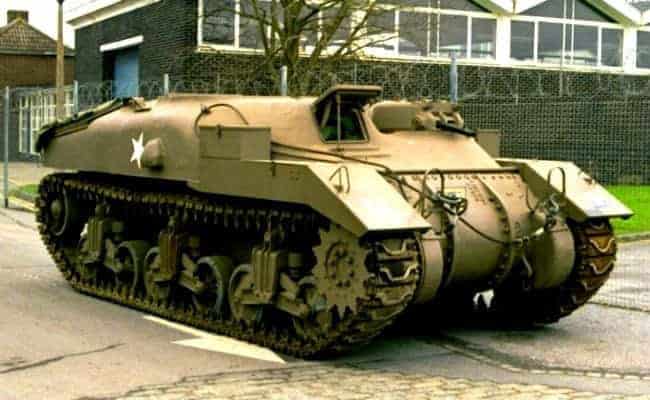D-Day operations and the latter stages of the Second World War saw some of the most unusually designed armored vehicles. The Allied forces had learned an important lesson after a failed attempt to raid the German-occupied port of Dieppe in 1942. The landscape favored the Germans and their armor. To successfully carry out Operation Overlord, the Allied invaders needed better preparation against their strong opponent and specially designed armored vehicles that could execute tasks beyond the ordinary. These were central to their success.
Chief of the Imperial General Staff General Sir Alan Brooke, therefore, commissioned the armored warfare specialist Major General Sir Percy Stanley Hobart to lead the development of these special units. He would also train crews on how to use them in actual combat. These special vehicles popularly referred to as Hobart’s Funnies came to play a key part in the successful invasion of continental Europe starting with the Normandy landings.
Hobart’s Funnies were a wide range of unusually modified tanks that could perform specialized tasks which standard tanks could not. Many of the ideas behind the fashioning of these tanks had already been tried or tested or were under experimental development by Britain as well as other countries such as Germany and Russia. This means that the Nazi Germans were fairly privy to the technology that could build these tanks, so the Allies kept their development as guarded as possible. The British military engineer Hobart improved on the existing designs and went further to create some entirely new technologies as well. Hobart’s Funnies became the most elaborate collection of engineering vehicles ever.
9. The Crab

The Crab Flail was a modified Sherman tank designed to explode mines in front of the tank to create safe passage for the Allied troops. It was equipped with a rotating cylinder with weighted chains all over it- the mine flail. The flail tank was one of the technologies that already existed before the time of Normandy invasion. Its predecessor, the Matilda ‘Scorpion,’ was used earlier in the 1942 Battle of El Alamein. Hobart, however, adapted the ‘Scorpion’ flail for use on the Sherman. This Crab differed from the Matilda ‘Scorpion’ in that its flail was powered by the main engine of the tank. It also retained the Sherman’s 75mm gun that could normally be fired when the flail was not being used.

